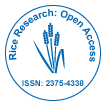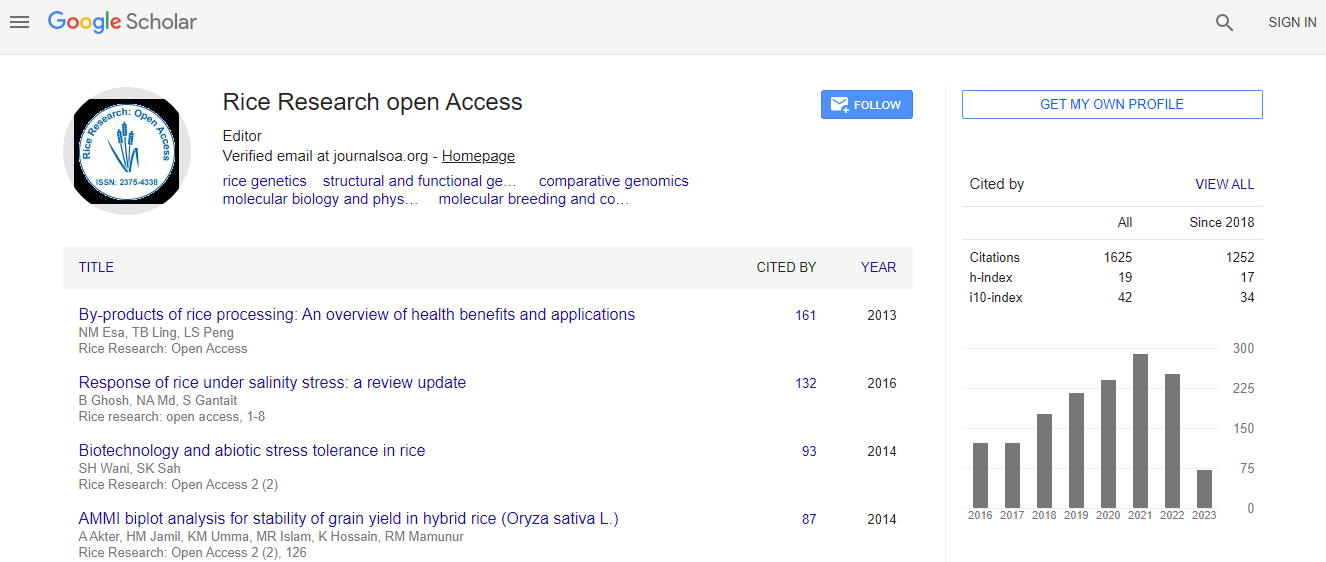Research Article
Molecular and Morphological Characterisation of Back Cross Generations for Yield and Blast Resistance in Rice
Divya Balakrishnan1*, Robin S2, Rabindran R2 and John Joel A21National Professor Project, Crop Improvement Section, Directorate of Rice Research-ICAR, Hyderabad, India
2Department of Rice, Centre for Plant Breeding and Genetics, Tamil Nadu Agricultural University, India
- Corresponding Author:
- Dr. Divya Balakrishnan
Scientist (Plant Breeding and Genetics)
National Professor Project, Crop Improvement Section
Directorate of Rice Research-ICAR, Rajendranagar-30, Hyderabad, India
Tel: +918374499907
E-mail: divyabalakrishnan05@gmail.com or divyab0005@gmail.com
Received Date: January 18, 2016; Accepted Date: August 15, 2016; Published Date: August 25, 2016
Citation: Mbamalu ON, Antunes E, Silosini N, Samsodien H, Syce J (2016) HPLC Determination of Selected Flavonoid Glycosides and their Corresponding Aglycones in Sutherlandia frutescens Materials. Med Aromat Plants 5:246. doi:10.4172/2167-0412.1000246
Copyright: © 2016 Balakrishnan D, et al. This is an open-access article distributed under the terms of the Creative Commons Attribution License, which permits unrestricted use, distribution, and reproduction in any medium, provided the original author and source are credited.
Abstract
Blast caused by Pyricularia oryzae is one of the major constraints limiting rice production globally. Study was undertaken at TNAU, India using a set of selected genotypes including cultivated varieties and (Near Isogenic Lines) NILs and they were screened for blast resistance both genotypically and phenotypically. Genetic diversity was studied among the genotypes and those which are diverse in blast resistance but had similar morphological and quality traits were selected as parents for breeding programme. Selected genotypes were crossed and advanced to further generations up to BC4F1 by marker assisted back crossing. Genetic variability and heritability parameters were assessed among these segregating generations for yield and resistance traits and their trend in each generation was analysed. The disease resistance traits showed high variability in segregating generations as the parents were selected based on the diversity in disease reaction and therefore gives scope for improvement through selection. High heritability coupled with low genetic advance was found in all characters in the segregating generations except single plant yield and panicle length.

 Spanish
Spanish  Chinese
Chinese  Russian
Russian  German
German  French
French  Japanese
Japanese  Portuguese
Portuguese  Hindi
Hindi 
